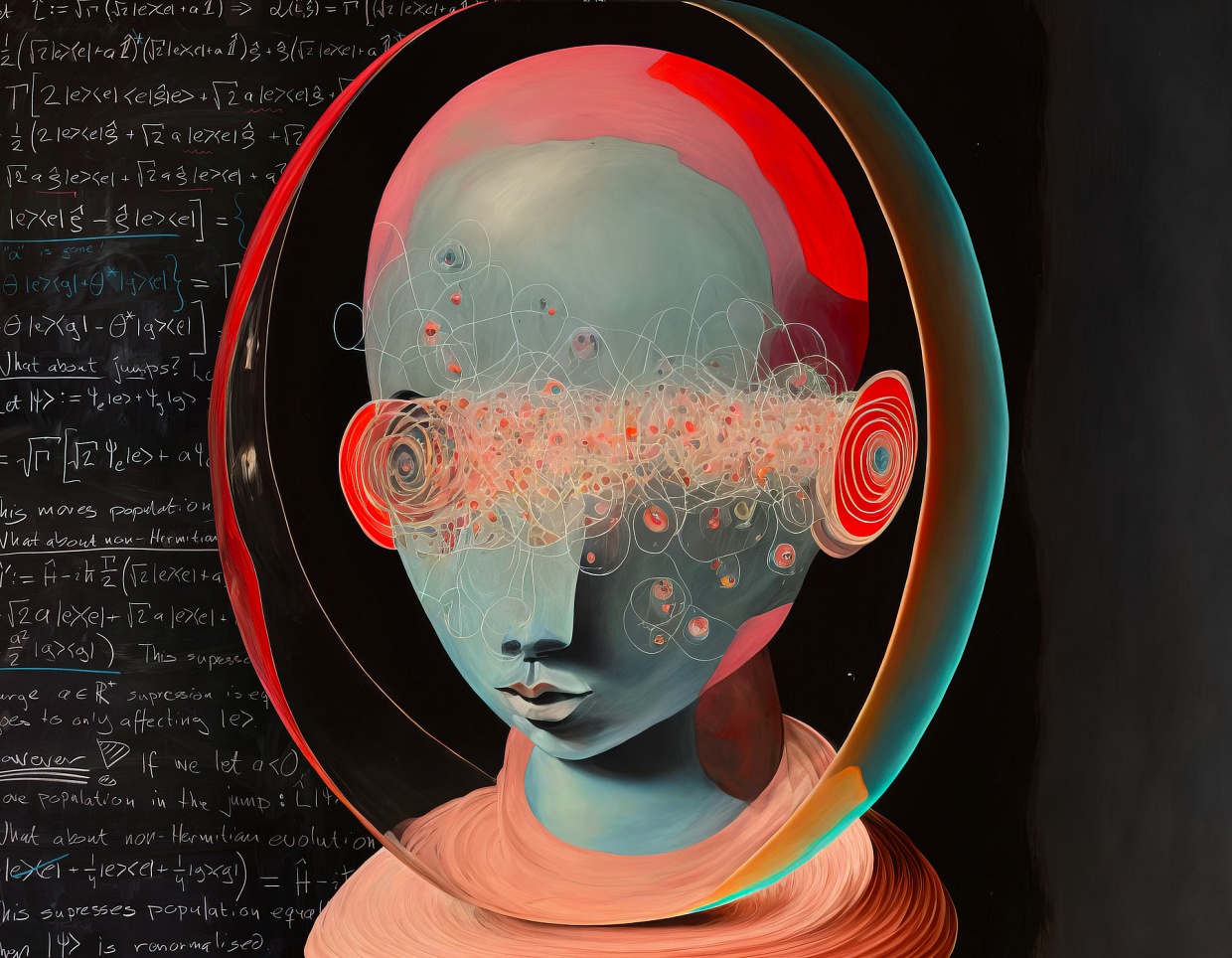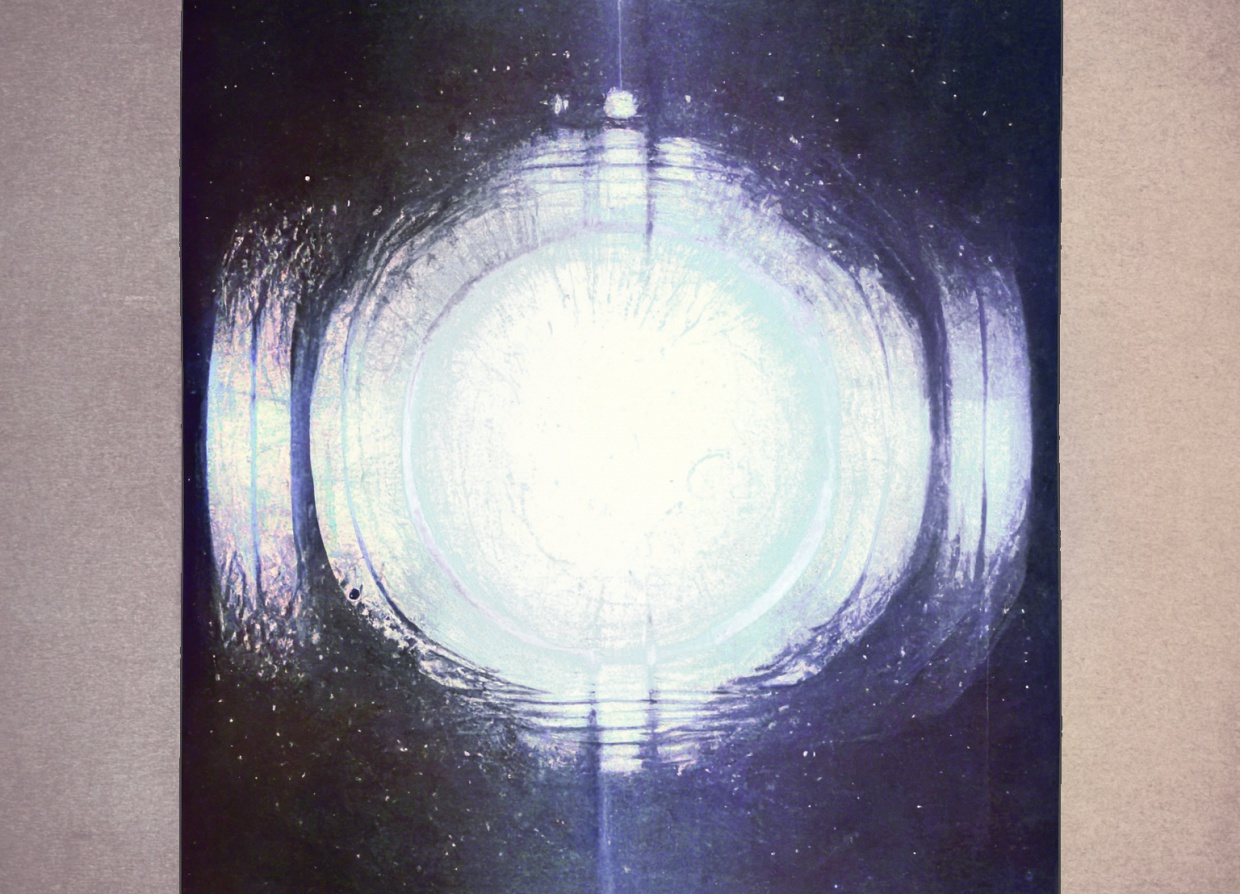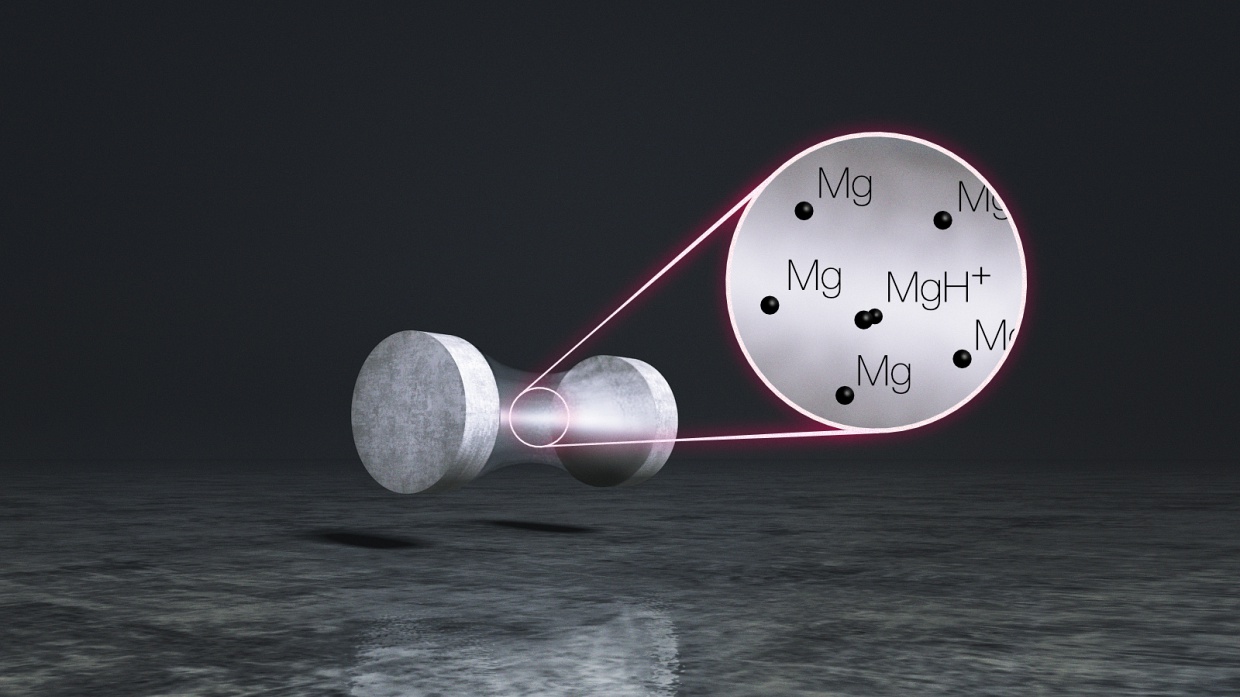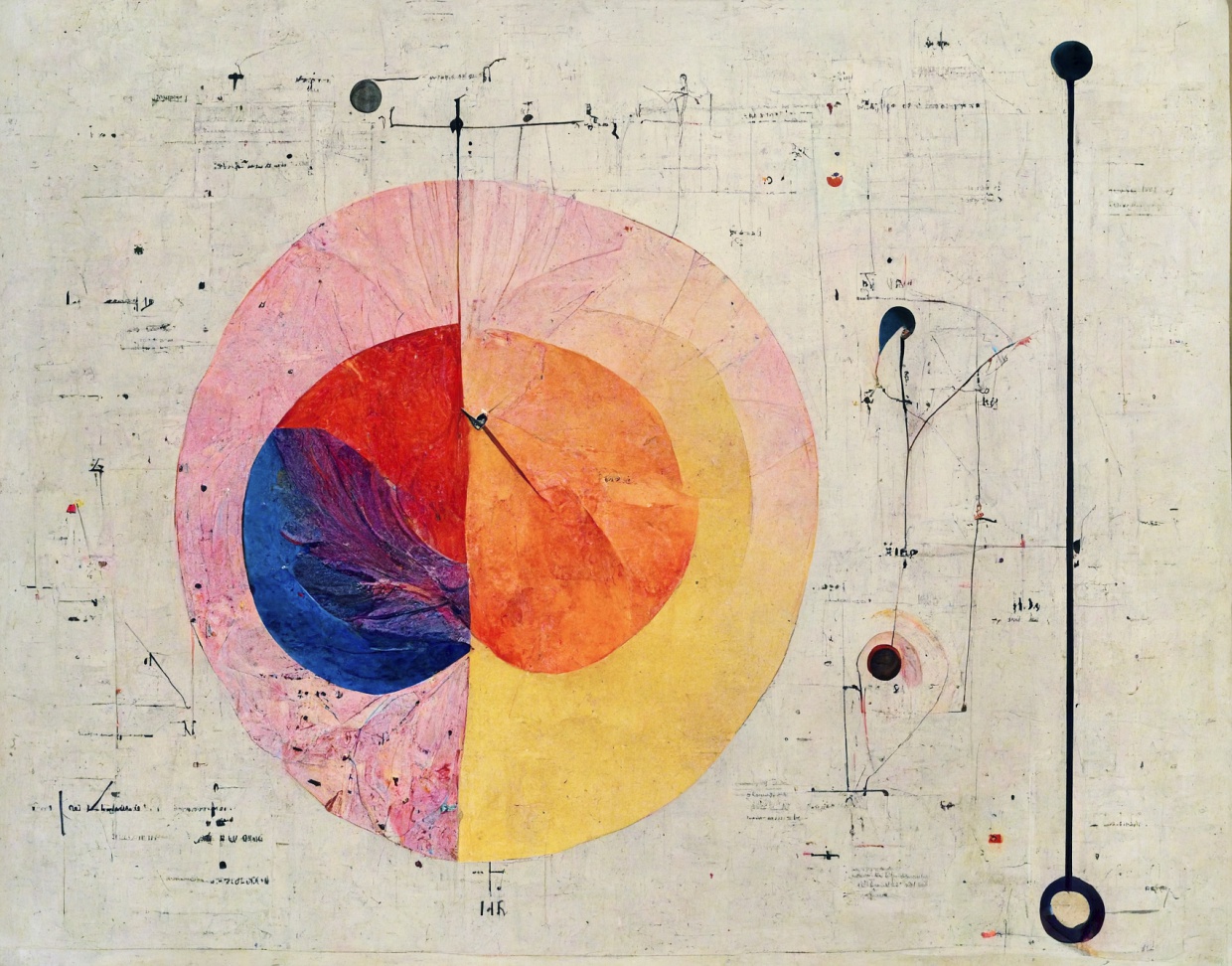Publications
PhD Thesis
Ensembles and Open Quantum Systems in Polaritonic Chemistry
 AI assisted artwork by Eric Davidsson.
AI assisted artwork by Eric Davidsson.– Direct download
Optical cavities are structures where excitations in the electromagnetic field (photons of light) are confined and generally long-lived. The spatial confinement will enhance interactions with any matter systems in the cavity, such that the behaviour of a combined system is best understood in terms of polaritonic states; mixtures of excitations in both light and matter. This polaritonic regime provides a novel approach for the modification and control of chemical reactions, and a multitude of experimental advancements are beginning to realise this potential. There are however many challenges with creating useful theoretical models of the prominent quantum mechanical behaviour in these systems, where model complexities regularly require numerical simulations.
In this thesis, we especially engage with two challenges from the field: One is to model cavities that contain ensembles of matter systems that interact collectively with the confined light. Another is to implement models based on open quantum systems, which is a dominant framework to include environment interactions.
With this work, we aim to deepen the understanding of the physics in these polaritonic chemistry systems. Our strategy is to isolate critical processes in order to study their significance and impact. In different contexts, this either allows us to identify potential obstacles to avoid or highlights opportunities to achieve desired experimental conditions and technological objectives.
Paper in J. Chem. Phys.
The role of dephasing for dark state coupling in a molecular Tavis–Cummings model
– Open access
The collective coupling of an ensemble of molecules to a light field is commonly described by the Tavis–Cummings model. This model includes numerous eigenstates that are optically decoupled from the optically bright polariton states. Accessing these dark states requires breaking the symmetry in the corresponding Hamiltonian. In this paper, we investigate the influence of non-unitary processes on the dark state dynamics in the molecular Tavis–Cummings model. The system is modeled with a Lindblad equation that includes pure dephasing, as it would be caused by weak interactions with an environment, and photon decay. Our simulations show that the rate of pure dephasing, as well as the number of two-level systems, has a significant influence on the dark state population.
Paper in J. Chem. Phys.
Simulating Photodissociation Reactions in Bad Cavities with the Lindblad Equation
 AI assisted artwork by Eric Davidsson.
AI assisted artwork by Eric Davidsson.– Open access
Optical cavities, e.g. as used in organic polariton experiments, often employ low finesse mirrors or plasmonic structures. The photon lifetime in these setups is comparable to the timescale of the nuclear dynamics governing the photochemistry. This highlights the need for including the effect of dissipation in the molecular simulations. In this study, we perform wave packet dynamics with the Lindblad master equation, to study the effect of a finite photon lifetime on the dissociation of the MgH+ molecule model system. Photon lifetimes of several different orders of magnitude are considered to encompass an ample range of effects inherent to lossy cavities.
Paper in J. Phys. Chem. A
Atom Assisted Photochemistry in Optical Cavities
 3D rendering by Eric Davidsson.
3D rendering by Eric Davidsson.– Open access
Strong light-matter coupling can modify the photochemistry of molecular systems. The collective dynamics of an ensemble of molecules coupled to the light field plays a crucial role in experimental observations. However, the theory of polaritonic chemistry is primarily understood in terms of single molecules, since even in small molecular ensembles the collective dynamics becomes difficult to disentangle. Understanding of the underlying ensemble mechanisms is key to a conceptual understanding and interpretation of experiments. We present a model system that simplifies the problem by mixing two-level Mg atoms with a single MgH+ molecule and investigate its collective dynamics. Our focus is on the modified chemical properties of a single diatomic molecule in the presence of an ensemble of resonant atoms, the structure of the major and intermediate polariton states. We present quantum dynamics simulations of the coupled vibronic-photonic system, for a variable size of the atomic ensemble. Special attention is given to dissociative the dynamics of the MgH+ molecule.
Master thesis
Landauer's principle – Its classical conception and extension to Quantum Mechanics
 AI assisted artwork by Eric Davidsson.
AI assisted artwork by Eric Davidsson.– Direct download
As a foundation we discuss some profound questions, such as: what is entropy?, and how to understand probabilities in physics? We then look at how Information Theory can motivate results in Thermodynamics—when considering the principle of maximum entropy inference. The purpose is to support a good understanding of Landauer’s principle—in its inceptive motivation in classical physics, and why it is still a controversial idea that authors continue to disagree about. To remedy the ambiguity, we pursue a universal argument in favour of the principle. The work to extend Landauer’s principle to Quantum Mechanics is then commenced, and we examine a situation where the principle delivers a seemingly anomalous prediction—before identifying what went wrong. Lastly, we pull at loose threads that will require further work to tie together and treat ourselves with speculations about the measurement problem.
Bachelor thesis
Quantum interference and interaction free measurement in a diatomic molecule
– Direct download
This thesis utilizes the split operator method, and a quantum mechanical numerical model, to study a phenomenon where a supposedly unstable molecule becomes more stable—or meta-stable—through matter wave interference. The model of the molecule and the split operator method are both discussed in detail, and then used in numerical calculations to arrive at results in two separate investigations.
The first is a successful replication of an earlier paper where the meta-stable behaviour is optimized for and found. The second investigation models an interaction-free measurement of the electronic state of the molecule by incorporating a quantized electromagnetic field. Entanglement between field and molecule is calculated to confirm the assumption that increasing entanglement means a larger risk for dissociating the meta-stable molecule. The assumption is shown to be consistent with the results from the numerical model.